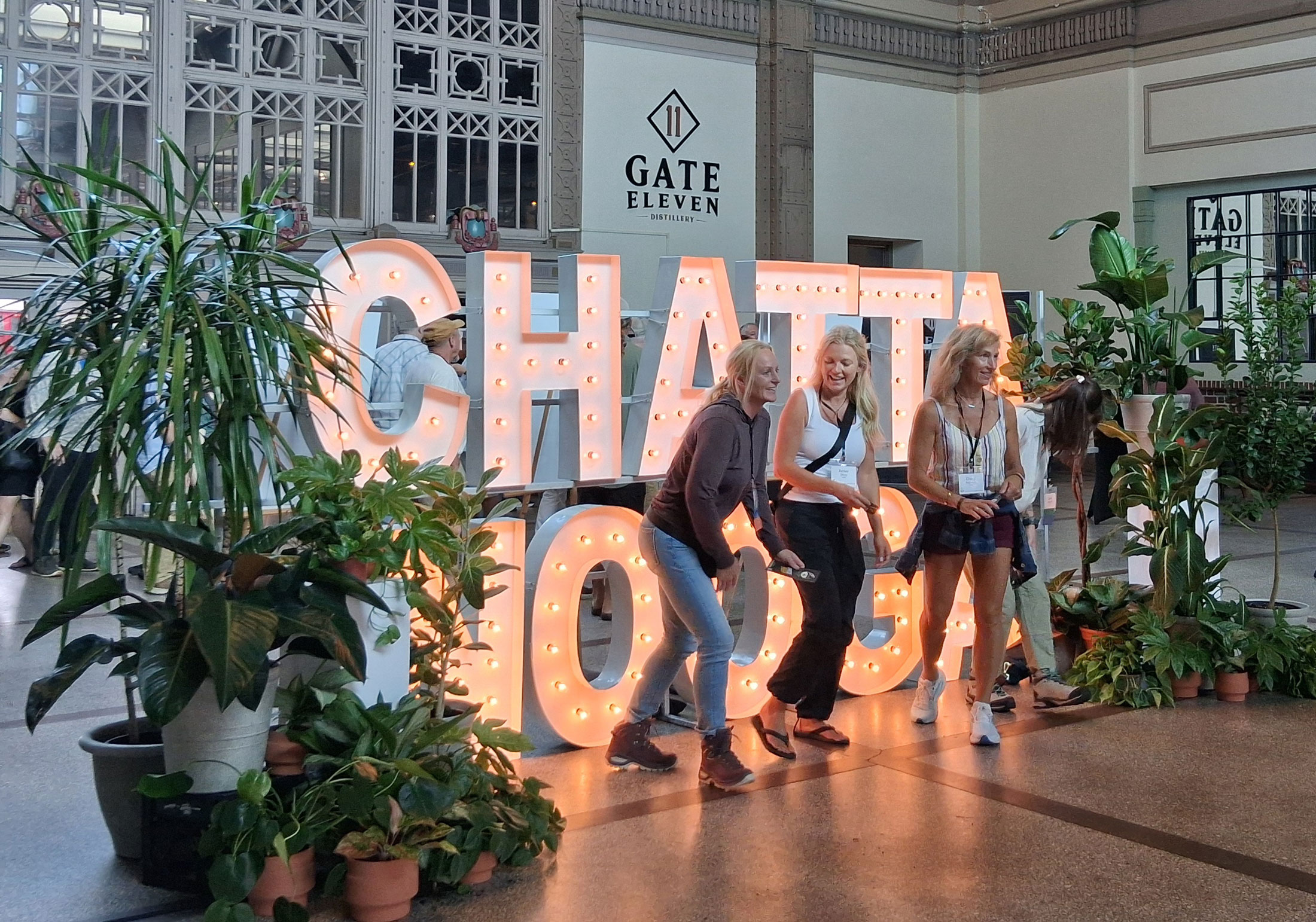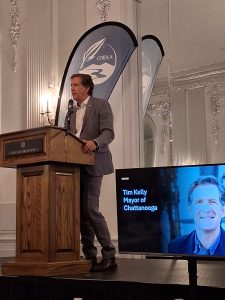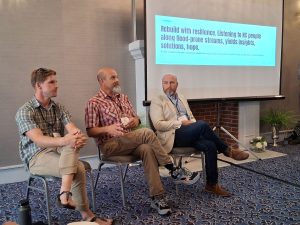
The running joke by presenters at the Outdoor Writers Association of American annual conference this year was, “I promise not to talk about AI.” As the jab implies, AI was a well-worn topic of the six-day event in an industry feeling the pressures of changing technology on recreation and adventure reporting.

About 225 writers and photographers, outdoor product promoters, and destination marketers heard a lot about artificial intelligence during the OWAA conference in Chattanooga, Tennessee, in mid-August. Though no consensus was sought about how to use AI to tell stories of the outdoors, many conference attendees felt the weathervane turning.
Marvin Cash, a fly-fishing podcaster, spent a good part of his week encouraging attendees who heard his talks about AI to call or email him anytime for help. In less than a year, he’s used AI to improve how he promotes his successful podcast with time-saving hacks, and his exposure has increased tremendously. Recently, he landed a nice sponsorship. As an independent broadcaster, he’s able to produce three podcasts a week because AI helps him routinize tasks, organize dictation into documents, generate transcripts, standardize file-naming, announce posts, and delete old files.
“AI is a personal assistant. It never sleeps, doesn’t take vacations, and you can’t hurt its feelings,” Cash told several crowds. He happily shares his knowledge with handouts on his Linktree account.
Besides Cash, several other presenters at OWAA also shared AI best practices, mindful of the concern about using AI as a substitute for good old-fashioned writing. Many ethical and quality concerns are stalling widespread uses of AI among this group of communicators; chief among them is the technology’s notorious reputation to be downright wrong or misleading. Often, hallway conversations at the conference gravitated to: “How can it help me? Do I want it to?”

On an afternoon panel discussion that included Gray’s Sporting Journal, Grist, and Sierra magazine, a few editors lamented email pitches written by AI, obvious by their clunky language and generalities. One editor said he’d received email queries that weren’t even remotely related to stories about the outdoors, an easy giveaway. Trust, they said, continued to be the foundation between editors and writers, and ultimately, with the public. Though not all the publications on the panel had official AI policies, none used it as a tool to write copy for publication.
During a keynote speech “Discoverability for Outdoor Communicators,” another speaker delved into finding authentic ways to reach people who want unique nature-oriented news and ideas. “People want to connect in a meaningful way,” said Heather Physioc, a marketing specialist who focuses on finding audience. “Resist the urge to be noisy and lean into sincere.” Still, questions remain about whether that can be accomplished now, or ever, with AI-generated content.

For most of the week, OWAA members talked about how to develop content, connect with readers, and collaborate on stories that inspire outdoor enjoyment and challenge the ordinary. The communicators discussed storytelling that feeds two distinctly human desires—connecting with other people and spending time in nature. Some discussions had little to do with AI, including the biggie: showcasing the human experience.
“My daughter doesn’t have self-esteem issues,” started Land Tawney, co-chair of American Hunters & Anglers Action Network, then he shared a personal story of a challenging hike he and his daughter took that bolstered her confidence at an early age. On another outing, Tawney, a public lands advocate, described a pivotal trip that allowed him to form a new bond with his son.
“My son, who’s three years younger [than my daughter], I’m not going to say we aren’t close, but we’ve had a harder time connecting,” he said. On a spring father–son trip down the Smith River in Montana, it started snowing and didn’t quit all day. Unfortunately, Tawney had accidentally left a bag of water-resistant gear at the put-in. To fight hypothermia, the two bonded over how to get warm and stave off boredom, whiling away the time in a tent. The result of the shared experience changed their relationship. “We became like a machine, like a team . . . We have been on it ever since. You can’t ever take that away from me.”

During the OWAA meeting, sessions covered conducting research and reporting on current environmental events. One panel on Hurricane Helene in East Tennessee and Western North Carolina drew a large crowd. Representatives from MountainTrue, Carolina Public Press, and Nantahala Outdoor Center discussed living through the storm and how it has changed recreational pursuits up through today.
OWAA also gives annual awards to its members for excellence in writing and photography. The winning work speaks volumes about what appeals to the public—topics and images that move us. It might be a photo of a hummingbird poised at a daylily darting for nectar or an article about how archery helped someone overcome grief. The stories also cover intrepid individuals who crave challenges, what one attendee defined as “the dances of danger we sometimes take in the outdoors”—the kind that don’t require a computer.
For links to award-winning work, check OWAA.org/contests.
Subscribe to get the latest posts sent to your email.
The Great Smokies Welcome Center is located on U.S. 321 in Townsend, TN, 2 miles from the west entrance to Great Smoky Mountains National Park. Visitors can get information about things to see and do in and around the national park and shop from a wide selection of books, gifts, and other Smokies merchandise. Daily, weekly, and annual parking tags for the national park are also available.